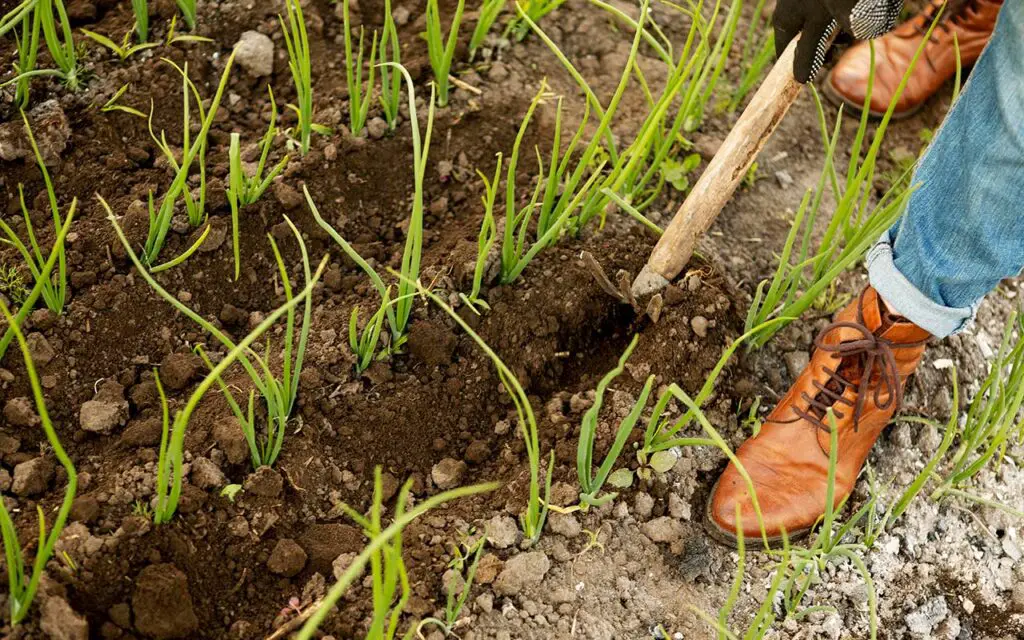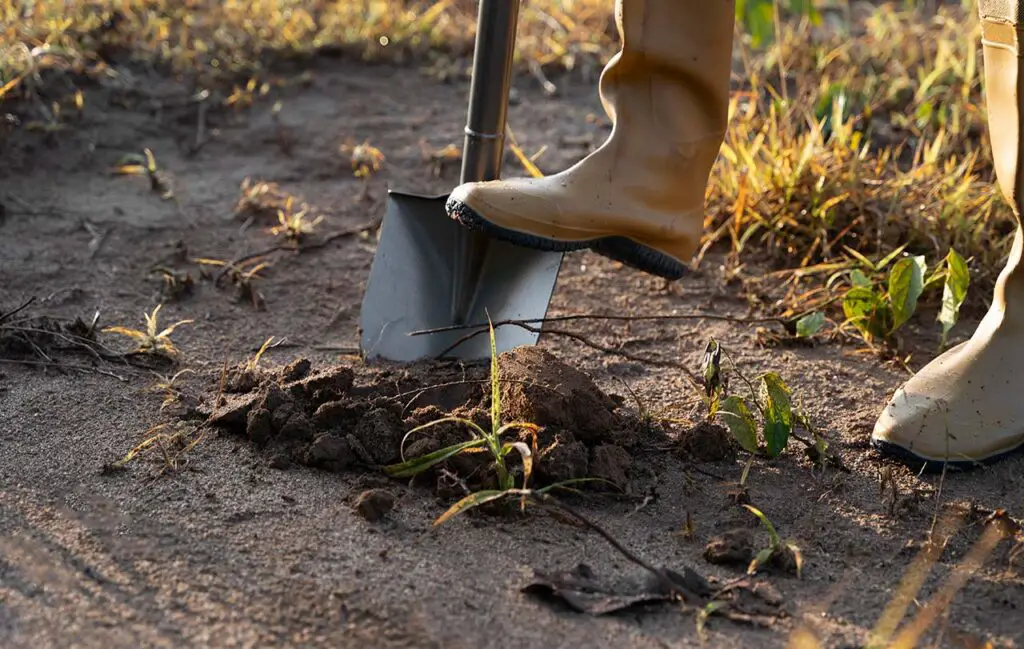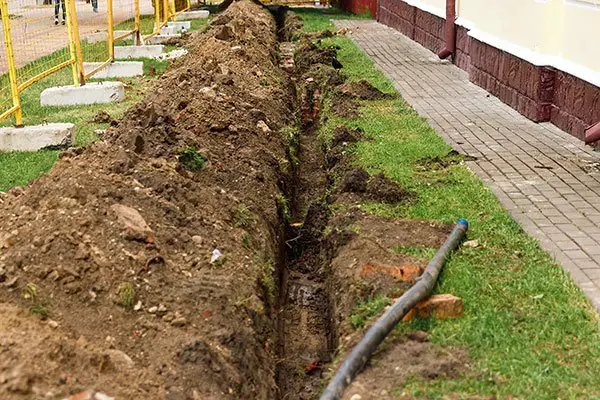How To Dig A Trench By Hand
Digging trenches is one of the earliest forms of work documented in historical records.
Before the industrial revolution, people dug trenches using their hands.
In that case, people used to dig deep trenches that had to be sustained or shored to prevent the trench walls from breaking down.
Despite that, you can dig trenches in your home to lay utility pipes, water pipes, or sewage systems.
Further, you can feel more comfortable if you have a steady drainage system in your home, since you will be assured that you will not have any issues with stagnant or flood water.
If you cannot manage to hire heavy machinery to help with trench digging, the guide below can help to understand how to dig a trench by hand.
Tools You’ll Need
Here are the main tools that you will need when digging your trench:
- Marking flags to indicate the place where you want to dig your trench
- A trenching shovel
- Measuring tape to help you measure the length and width of your trench
- Sharpshooter, also referred to as a drain spade, to dig deep into the ground
- A hand trowel to help you return backfill soil into the trench
- A siphon pump to help you drawn out water from the trenches of your break any water pipe
- A wet drilling kit or bore kit to get under the driveways or sidewalks
- A chainsaw, loppers, and ax to help cut thick tree roots
- A tamper to flatten out sod after you complete the process of laying pipes in trenches
- An ax to assist in cutting tree roots, stones, and rocks. The tool can also help in digging narrow trenches.
- A garden hoe to loosen the soil and grass before you start digging the sod
- A leaf rake to remove small debris and smooth the soil
- A long digging bar in maneuver in hard soil and rocky areas.
Precautions Before Digging a Trench
Here are some things to consider before you start digging that trench.

Call before you dig
If you cut underground utility lines, they can kill or result in costly expenses.
Remember that you will also be responsible for any damages that you will contribute to the underground utility lines.
To prevent such risk, you need to all 811 about three or four days before you begin digging your trench.
In this case, the utility firm will send a technician to inform you where the underground cables are laid.
You can also call the drainage experts to ensure that you do not interfere with the underground installation, walls, or fences.
Remember, no person might want to dig a trench but be forced to disassemble it by the local agencies.
In summation, if you hurry in digging your trench without approval from the local agencies, you can end up wasting your resources and time.
Consider the soil where you are digging your trench
If you dig your trench in wet, loose, stony, and sandy soil, it can be dangerous to dig deeper trenches.
If the soil is extremely wet, you can de-water, remove the excess water, and stabilize it while you work.
In contrast, if you dig a deep trench, you can use a support structure known as shoring to prevent the sides from caving inside.
Further, digging a deep vertical trench in loose soil can result in a risk of collapse.
In that case, you will need to undertake a benching technique that involves digging a trench in tiers or steps.
Dress Properly
Effective hand digging of trenches needs you to wear proper clothing that can include a long-sleeved shirt, undershirt, a pair of trousers, a hat, a pair of gloves, and sunscreen.
Apart from the dressing, you need to drink plenty of water because you might not wish to become dehydrated.
Sharpen the shovel
A sharp shovel edge can make a difference when you are digging through roots or hard soil.
You can use a file or a grinder equipped with a metal-grinding disc to sharpen your shovel.
Mark the depth
A tape measure is not the only tool that you can use to check your trench depth.
Since it can become wrecked or filled with dirt, you can mark the depth of the trench on your posthole digger or shovel for easier measurement.
Dig when the soil is dry
You should not make the mistake of digging a trench during the rainy season because you can be stuck in heavy and wet soil.
That means you need to wait until the soil in your area is dry before you begin digging.
Also, you will not have annoying soil sticking onto your hand digging tool.
However, you will have to water the soil two hours before you start digging to soften it.
In that way, you can make the job effective and less stressful.
Ensure you dig the trench in a route that results in limited damage
Ensure you dig your trench in areas where shrubs, trees, and other plants cannot suffer injuries or die due to damage to their roots.
Further, remember to be cautious regarding your structures, sidewalks, and driveways to prevent them from collapsing.
Avoid soil compaction of nearby trees

If it is a must for you to dig a trench near the tree, you need to avoid compacting soil into the tree because it can die.
In particular, if you compact soil into a tree, it can lead to decreased soil permeability and insufficient availability of nutrients for the root intake. In reality, you might not want to destroy your trees when digging a trench.
Steps to follow when digging a trench by hand
Map out a plan
Even if you are experienced at digging, it is advisable to plan to follow for the job.
It can assist you in getting better results and prevent you from spending a lot of time digging.
Remove the vegetable you wish to keep
You can remove turf grasses and small plants and store them properly for replanting.
Remove the topsoil
You might wish to remove the topsoil to approximately 10 to 20 inches deep.
Ensure you store the soil in an area where it cannot be contaminated.
Head the topsoil to a height of 1 to 1.5 m high to avoid compaction.
You can use a pickaxe to loosen the hard soil.
If you attempt to disintegrate the hard soil using a shovel, you can easily get tired within a short period.
It is recommended to use a shovel to loosen the soil after disintegrating it using a pickaxe.
Dig the trench to your desired depth
Ensure you dig the trench according to the depth and width that you had planned.
In particular, you need to define the sides of your trenches by using a shovel.
You can shave the trench sides using a shovel to maintain them in a vertical shape.
Remember, if you allow the trench to become narrower as you dig deep into the ground, it can become more challenging to dig.
Ensure your first cut is dug to the first bench depth if you are benching.
As you continue to dig, you can remove the soil from the bottom area using a grub hoe, but you can use a space or shovel as it becomes deeper.
A grub hoe can be the best tool because its blade is perpendicular to the handle, enabling you to pull it out from the trench with soil easily.
When digging, you can place the soil that you remove from the trench on one side.
In that way, you can leave the other side for an easier time, especially when you are digging a deep trench.
Clean up the site
After you have completed digging your trench, you can clean the site.
Ensure you do not contact the excavated soil because you will reuse it as a filler for your trench.
Install drainage system, pipes, or cabling
After are trench is set and the site is clean, you can begin undertaking the activity that made you dig the trench.
For instance, the activity might involve installing electricity cabling, internet cables, or drainage.
If your activity entails plumbing or electricity, you need to contact a professional because most plumbing and electrical jobs need qualified technicians to conduct them.
Backfill the trench
Ensure you refill the trench, and you can rent a gasoline plate tamp to assist in packing the soil tightly.
You can replant your vegetation after leveling the ground where you dug a trench.
Final Word

Even if you want to prepare for a drainage system for your home or to install underground electricity cables, hand digging a trench can be a wise decision to help you save a lot of money.
The process of digging begins by choosing the appropriate tools and knowing the tips of digging a trench.
That is why we have removed the burden from you by providing a detailed guide regarding digging a trench using your hands.